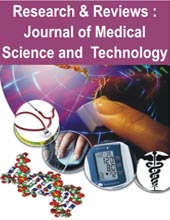Open Access

Ajay. V G,

Varun E,

Ashith B. P,

Lakshmikantha K. N,

R M Mahesh,
- Associate Professor Department. of CS&E, Sai Vidya Institute of Technology Karnataka India
- Associate Professor Department. of CS&E, Sai Vidya Institute of Technology Karnataka India
- Student Department. of CS&E, Sai Vidya Institute of Technology Karnataka India
- Student Department. of CS&E, Sai Vidya Institute of Technology Karnataka India
- Student Department. of CS&E, Sai Vidya Institute of Technology Karnataka India
Abstract
Age-related macular degeneration, glaucoma, and diabetic retinopathy are the three main causes of blindness in the globe. To avoid visual loss, early identification and treatment of these disorders are essential. The goal of this research is to create an automated method for detecting retinal diseases by analyzing retinal fundus pictures with machine learning techniques. Python and the Tkinter package for the graphical user interface are used in the construction of the system. High accuracy is attained by the trained ResNet model in differentiating between normal and aberrant retinal pictures. The model provides disease prediction and classification results for a given input fundus image through an intuitive and user-friendly interface. By delivering rapid and automated screening, this system plays a crucial role in the early diagnosis of retinal abnormalities. Early detection is vital for initiating timely treatment, which can significantly reduce the risk of vision impairment and other complications. This advanced technology supports healthcare professionals in making informed decisions and offers a reliable tool for routine screenings, ultimately enhancing patient outcomes and contributing to the prevention of severe vision loss.
Keywords: RESNET, convolutional neural networks, retinal disease detection, fundus images, healthcare, vision impairment, retinal abnormalities, medical imaging, disease classification, patient outcomes.
[This article belongs to Research & Reviews : A Journal of Medical Science and Technology(rrjomst)]
References
- Abramoff, M. D., Lou, Y., Erginay, A., Clarida, W., Amelon, R., Folk, J. C., & Niemeijer, M. (2016). Improved automated detection of diabetic retinopathy on a publicly available dataset through integration of deep learning. Investigative Ophthalmology & Visual Science, 57(13), 5200-5206. https://doi.org/10.1167/iovs.1619964
- Burlina, P. M., Joshi, N., Pekala, M., Pacheco, K. D., Freund, D. E., & Bressler, N. M. (2017). Automated grading of age-related macular degeneration from color fundus images using deep convolutional neural networks. JAMA Ophthalmology, 135(11), 1170-1176. https://doi.org/10.1001/jamaophthalmol.2017.3782
- Chen, X., Xu, Y., Wong, D. W. K., Wong, T. Y., & Liu, J. (2018). Glaucoma detection based on deep convolutional neural network. Engineering in Medicine and Biology Society (EMBC), 2015 37th Annual International Conference of the IEEE, 715-718. https://doi.org/10.1109/EMBC.2015.7318462
- Gargeya, R., & Leng, T. (2017). Automated identification of diabetic retinopathy using deep learning.
- Ophthalmology, 124(7), 962-969. https://doi.org/10.1016/j.ophtha.2017.02.008
- Gulshan, V., Peng, L., Coram, M., Stumpe, M. C., Wu, D., Narayanaswamy, A., Venugopalan, S., Widner, K., Madams, T., Cuadros, J., Kim, R., Raman, R., Nelson, P. C., Mega, J. L., & Webster, D. R. (2016). Development and validation of a deep learning algorithm for detection of diabetic retinopathy in retinal fundus photographs. JAMA, 316(22), 2402-2410. https://doi.org/10.1001/jama.2016.17216
- Kermany, D., Goldbaum, M., Cai, W., Valentim, C., Liang, H., Baxter, S., McKeown, A., Yang, G., Wu, X., Yan, F., Dong, J., Prasadha, M., Pei, J., Ting, D., Zhu, J., Li, C., Hewett, S., Dong, J., Ziyar, I., Shi, A., …
- Zhang, K. (2018). Identifying medical diagnoses and treatable diseases by image-based deep learning. Cell, 172(5), 1122-1131. https://doi.org/10.1016/j.cell.2018.02.010
- Krizhevsky, A., Sutskever, I., & Hinton, G. E. (2012). ImageNet classification with deep convolutional neural networks. Advances in Neural Information Processing Systems, 25, 1097–1105. https://doi.org/10.1145/3065386
- Li, Z., Keel, S., Liu, C., He, Y., Meng, W., & Scheetz, J. (2018). An automated grading system for detection of vision-threatening referable diabetic retinopathy on the basis of color fundus photographs. Diabetes Care, 41(12), 2509-2516. https://doi.org/10.2337/dc18-0577
- Poplin, R., Varadarajan, A. V., Blumer, K., Liu, Y., McConnell, M. V., Corrado, G. S., Peng, L., & Webster, D. R. (2018). Prediction of cardiovascular risk factors from retinal fundus photographs via deep learning. Nature Biomedical Engineering, 2(3), 158-164. https://doi.org/10.1038/s41551-018-0195-0
- Chang J, Ko A, Park SM, Choi S, Kim K, Kim SM, Yun JM, Kang U, Shin IH, Shin JY, Ko T. Association of cardiovascular mortality and deep learning-funduscopic atherosclerosis score derived from retinal fundus images. American journal of ophthalmology. 2020 Sep 1;217:121-30.

Research & Reviews : A Journal of Medical Science and Technology
| Volume | 13 |
| Issue | 02 |
| Received | May 1, 2024 |
| Accepted | June 22, 2024 |
| Published | August 13, 2024 |

